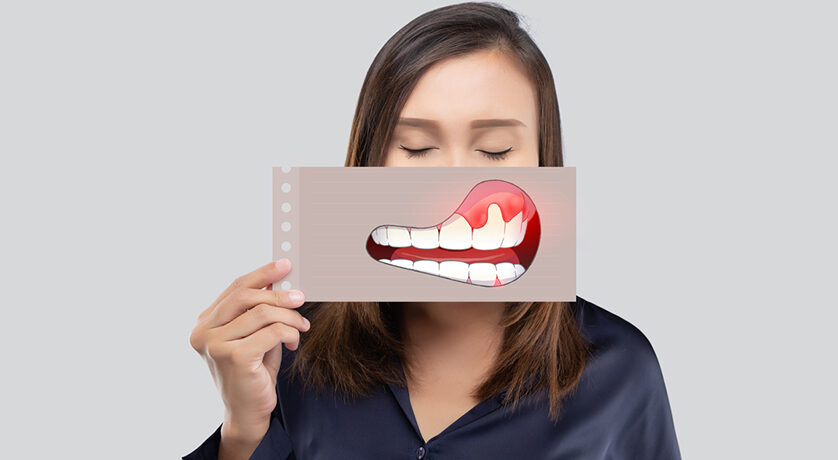Free
Second Opinion
New Patient Special: Only $99!
Includes Exam, X-Rays, & Basic Cleaning
$0 Exam and Basic Cleaning
*Insured Patients*
New Patient Special: Only $99!
Includes Exam, X-Rays, & Basic Cleaning
New Patient Special (Only For Cibolo Location)
Free Limited Exam & X-rays
Affordable Wisdom Teeth Removal is available in just one appointment! – Includes Exams, X-Rays, and Sedation! Offer ends Dec 30, 2024.
What Causes My Gums to Recede?
November 21, 2022Do you generally feel like your teeth keep getting bigger as you age? One of the common identifiers of receding gums is the increasing size of natural teeth. As your gums recede, your teeth seem to grow bigger, particularly pertaining to height. If you suspect to have such dental problems, consider periodontics in South Austin, TX.

What Is Gum Recession?
It is a condition referring to the process through which the margin of the gum tissue moves further away from the surrounding teeth. Ideally, you begin to notice a lowering gum line. Over time, the recession exposes your tooth roots, which might be why you notice your teeth looking longer than usual. Although gum recession can be a mild problem that is barely noticeable without the intervention of a dentist near you, it is not always the case. If you delay treatment, gum recession can lead to various other complications if it is linked to periodontal disease.
What Causes Gum Recession?
The most commonly known cause of receding gums in dentistry is periodontal disease. It is an infection of the gums and bone tissue that occurs in two stages; gingivitis and periodontitis. The former has milder symptoms than the latter. Your condition advances to periodontitis if you do not visit a dentist in South Austin, TX, for gingivitis treatment. Either way, infected gums lead to gum recession. The more severe the infection, the more critical your gum recession becomes. The stakes keep getting higher since severe gum recession can cause tooth loss.
Other Causes of Receding Gums
Aside from gum disease, several other factors can contribute to receding gums. Most of them have to do with the life choices you make. They include the following:
- Dental plaque and tartar – due to poor oral hygiene. Plaque and tartar typically settle at the bases of teeth near the gum line. Over time, the build-up will release bacteria that detaches your gums from your teeth, causing them to pull away.
- Aggressive teeth brushing, using a tough-bristled toothbrush.
- Dental misalignment – if your teeth are ill-positioned, some parts of your gum tissue can succumb to the pressure and begin to wear down.
- Dental trauma – an injury or accident impacting your oral cavity can damage your gums severely, causing them to pull away.
- Tobacco usage – smoking or chewing tobacco compromises your gum health.
- Wearing braces for long or having lip or tongue piercings.
Still, do not dismiss the fact that some people are genetically predisposed to gum-related oral problems, including thin gum tissue. Therefore, an early diagnosis from a dentist near you is paramount to your treatment and recovery.
How Will You Know You Have Receded Gums?
Some common signs of gum recession are:
- Tenderness and pain near your gum line
- Sensitivity to temperature changes in your mouth
- Heightened sensitivity when you brush your teeth
- Open gingival embrasures – are small black triangles between teeth at the base of the gum line that form because of gums pulling away.
- Tooth mobility – teeth can start to feel shaky if you leave gum recession undiagnosed and untreated long enough.
Treating Gum Recession with Tissue Grafting
Unfortunately, receding gums do not grow back even when you work to care for your gum health. You must visit us at Peak Dental – South Austin to seek treatment options to restore your gums. Our treatment protocols will prevent the worsening of the recession and create alternatives for reinforcing the severely damaged portions of your gums.
Tissue grafting entails using grafts from the roof of your mouth or a donor source to restore the damaged portion of your gums. The surgical procedure is necessary to protect the jawbone’s health and prevent premature tooth loss. During surgery, the graft tissue will replace the damaged or missing part of your gums.
Other Treatment Options for Receding Gums
Dentists can employ various protocols to treat gum disease. Tissue grafting is the best approach when you have severe gum damage. Other treatment options are:
- Cosmetic dental bonding – to mask the exposed tooth roots.
- Orthodontics – to correct a malalignment.
- Deep dental cleaning – including processes like root planing and scaling to cater to tooth roots.

